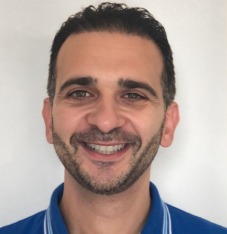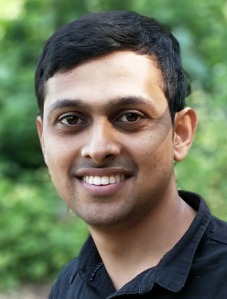Impact: Intelligent tools help with child abuse forensics

In the coming weeks the nominees for the Ben Feringa Impact Award (BFIA) 2023 will introduce themselves and their impactful research or project. This week: George Azzopardi and his PhD student Guru Bennabhaktula, nominees in the category researcher for their research project 4NSEEK ‘Forensic Against Sexual Exploitation of Children.’
Who are you?
My name is Dr George Azzopardi and I am a tenure-track assistant professor of Computer Science. I am embedded in the Information Systems department of the Bernoulli Institute and my research interests include brain-inspired pattern recognition and image retrieval with application to forensic, (bio)medical, and radio astronomy image analysis. I have been the co-supervisor of five PhD students and I am currently the co-supervisor of another five PhD students, one of whom is Guru Bennabhaktula, who was instrumental in the success of the 4NSEEK project.
Which Faculty?
Faculty of Science and Engineering
Could you explain what your research was about?
I was the leader of a work package (WP) within the project 4NSEEK ‘Forensic Against Sexual Exploitation of Children’, which was co-financed through the EU Internal Security Fund programme. The project revolved around the development of an AI-based tool that would help law enforcement agencies (LEAs) in their investigations of child sexual exploitation material (CSEM). We had two main objectives: 1) to identify which camera model/device was used for the images/videos studied, and 2) to determine whether a given set of images/videos were captured by the same device or not. A key scientific challenge in the source camera identification techniques concerns the reliable extraction of the camera sensor noise while ignoring the signal from the scene content. We overcame this issue with our novel methodologies that enabled us to set a new benchmark result in the field.

What made the research impactful and how does society benefit from your research?
The impact of this overall project is the ability to extract traces from images and videos and use them to identify the camera that was used to capture such data. This is akin to identifying the firearm used to fire a bullet found at a crime scene. As done in the 4NSEEK project, such algorithms enable LEAs to be more efficient and precise in the forensics of CSEM, and hence to enable them to build stronger cases against alleged offenders. Moreover, the developed algorithms can also be used in other applications, such as the detection of the face morphing attack, a topic on which Guru and I will be collaborating with the Netherlands Vehicle Authority (RDW).
What was your personal motivation to conduct this research and what did you learn?
Not only was it an engaging research topic that presented numerous scientific obstacles in pattern recognition, but it also happened to align with the period when I became a father. This served as an added incentive for me to help create a safer world, especially for children. Participating in this project offered valuable insights and learning experiences in various aspects. In particular, I gained experience in taking a holistic approach to understanding a problem, including collaborating with victim foundations and delivering industry-standard algorithms (TRL9). Another valuable experience was disseminating the project's findings through various media outlets, which led to a new partnership with RDW. Overall, the project taught me how to work with different partners, understand complex problems with a comprehensive approach, and effectively disseminate research findings.
More news
-
13 January 2026
New framework verifies AI-generated chatbot answers
